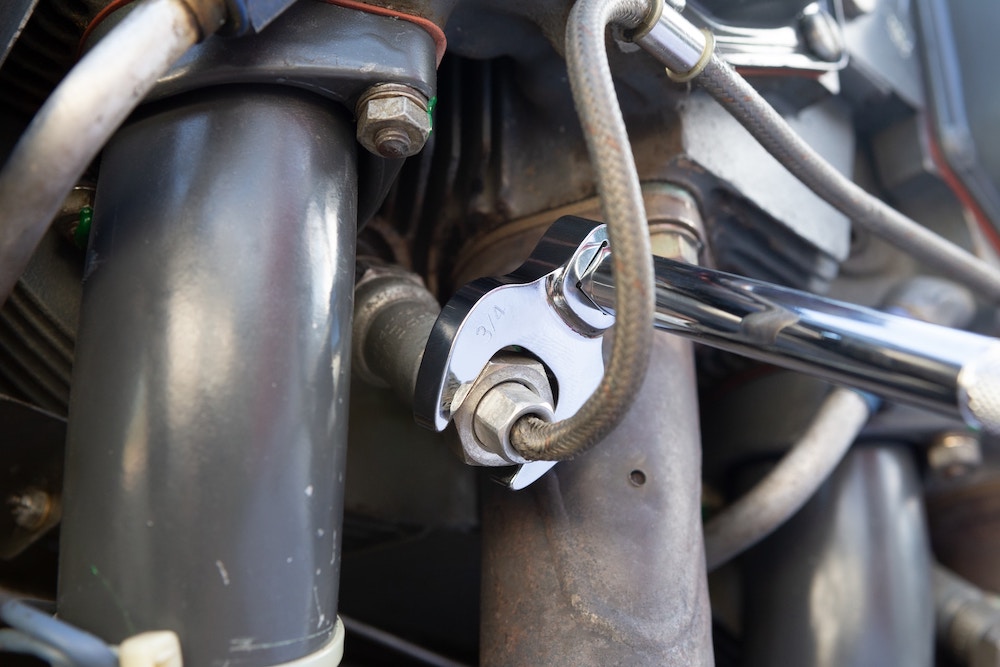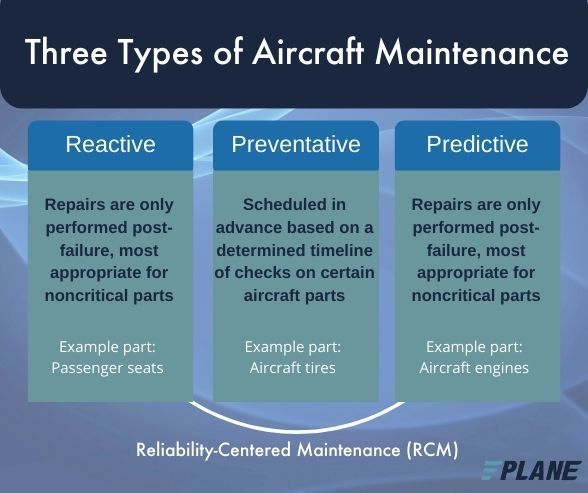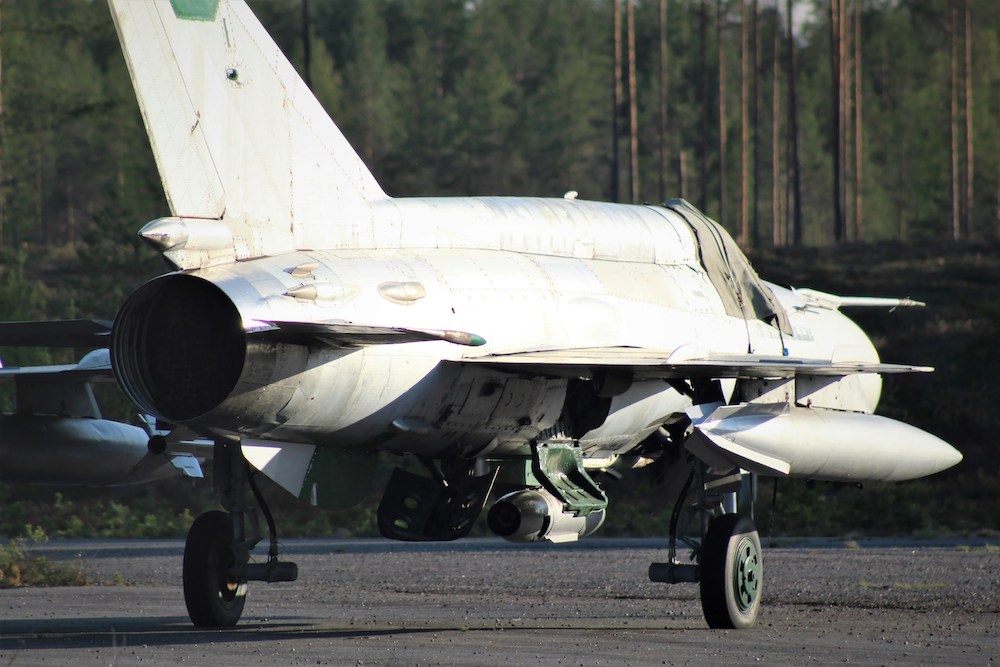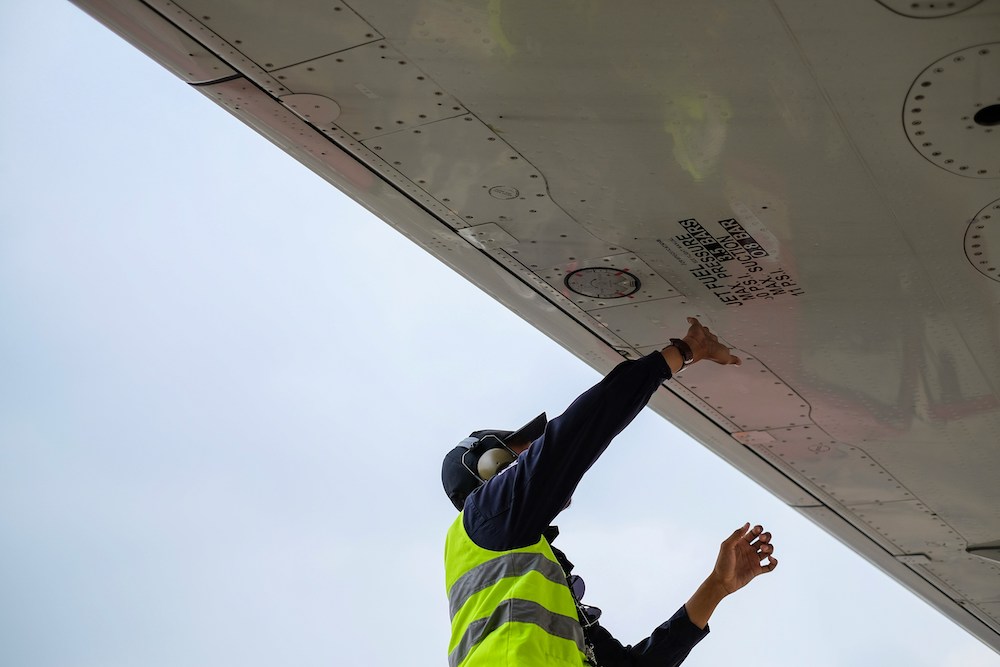Aircraft Predictive Maintenance and Its Role in Reliability-Centered Maintenance (RCM)

Maintenance is a fundamental part of ensuring an aircraft is safe for operation. Poor maintenance planning can keep aircraft grounded, passengers unhappy, and aircraft operators losing revenue. Therefore, aircraft operators must implement adequate maintenance programs to increase operational reliability, improve cost-saving measures, and maintain adequate safety margins.
Understanding Three Approaches to Aircraft Maintenance
Reactive maintenance – To appreciate predictive maintenance for aircrafts, it’s important to differentiate it from reactive maintenance. The latter permits a particular part of an aircraft to be used to its limits, allowing repairs to be performed only after a failure. This run-to-failure strategy is the least effective of the maintenance programs and is generally only used for noncritical equipment.
Preventive maintenance – Compared to the above, preventative maintenance is scheduled in advance based on a determined timeline of checks on certain aircraft parts. Although much more effective than reactive maintenance, the biggest challenge with preventive maintenance is that it is not always easy to pinpoint a suitable time to carry out the checks.
Predictive maintenance – With the help of technological progress, aircraft predictive maintenance is becoming more feasible and accurate. It works by leveraging data to better predict and manage aircraft maintenance efforts. It continually monitors the mechanical conditions of certain aircraft parts and systems and their operating performance to provide the maximum interval between repairs, consequently optimizing investments.

Combining All Three Reliability-Centered Maintenance (RCM)
Ideally, an aircraft operator can implement reliability-centered maintenance (RCM), which suggests aircraft operators use different maintenance strategies depending on the nature of the equipment and the nature of the equipment failures. For example, components, like tires, must have a hard time maintenance schedule due to their high rate of wear and tear (i.e., preventive maintenance), while noncritical parts, like passenger seats, are allowed to fail before they must be serviced (i.e., reactive maintenance). However, more significant systems, like engines, should be monitored to detect early signs of degradation and maintenance should be scheduled accordingly to prevent system failure (i.e., predictive maintenance). To help readers further appreciate the background and potential of aircraft predictive maintenance, we dive deeper into its evolution and approaches to implementation.
How Aircraft Predictive Maintenance Started
Can you believe the concept of aircraft predictive maintenance dates to World War II (WWII)?
A gentleman by the name of Conrad Hal Waddington was an advisor to the Royal Air Force during WWII and evaluated the way B-24 bombers operated from Northern Ireland to track German naval submarines. What Waddington found was that at any given time, half of the B-24 fleet was down for preventive maintenance. The assumption with preventive maintenance was that if the maintenance cycle was tight enough, there was a high chance that a catastrophic failure could be prevented before it manifested itself.
However, when Waddington ran some statistics, he found that peak unplanned repairs happened right after scheduled maintenance and then decreased before the next scheduled maintenance cycle. This discovery unveiled that rigorous maintenance did more harm than good, as each disassembly disturbed a working system. As a result of these findings, the Royal Air Force extended their maintenance cycles, while significantly increasing their airtime during the war.
With this in mind, let’s explore how historical findings put a dent in the concept of preventive maintenance and, therefore, paved the path of the future for aircraft predictive maintenance.
How Predictive Maintenance Continued to Evolve
Preventive maintenance assumes equipment reliability deteriorates with age. The life cycle of a component is determined through statistical analysis, and repairs or overhauls are scheduled accordingly. However, when a failure occurs prematurely, the repair cycles are reduced or checks become more rigorous, which in turn makes this more expensive for the aircraft operator.
In the 1960’s, aviation industry experts began to further question whether age is an adequate predictor of failure and through data collection and analysis determined that only 11% of aircraft components can benefit from age-based maintenance. These findings led to some of the most impactful strategies in modern maintenance engineering, which resulted in the concept of reliability-centered maintenance (RCM).
RCM suggests aircraft operators use different maintenance strategies, such as hard-time maintenance, run-to-failure strategy, condition monitoring, and/or predictive maintenance, depending on the nature of the equipment and the nature of the equipment failures. RCM is the cornerstone of modern maintenance techniques that make aircraft reliable and cheaper to maintain and most innovation happens with condition monitoring and predictive maintenance.
However, condition monitoring and predictive maintenance are not one and the same, regardless of what equipment vendors may market. Condition monitoring can tell something is wrong with an aircraft component, but it cannot forecast the exact time of failure like predictive maintenance can.
Condition Monitoring vs Predictive Maintenance
In today’s day and age, any modern machinery provides feedback on its operation, so condition monitoring is actually very common. Sensors can be installed on my aircraft component and data can be collected so it can be sent to a server for analysis. Condition monitoring can be accomplished by setting health thresholds or using machine learning for anomaly detection.
A standard way to do condition monitoring is to gather sensor data over time and define a threshold that a key parameter (i.e., vibration, liquid levels, temperature, pressure) must stay within. If the threshold is exceeded, the system sends an alert to check the specific aircraft component. However, the threshold technique is not very precise, and this is where machine learning can help through the implementation of predictive maintenance.
Anomaly detection is a common machine-learning task that looks at data to find outliers. Anomaly detection can be quite sophisticated by factoring in several parameters simultaneously. Different learning techniques can be used for anomaly detection:
- Supervised learning. In this case, the model uses the history of normal readings and those that have led to failures. The model is then trained to distinguish between the two and recognize signs of impending trouble.
- Unsupervised learning. In this case, the model does not know how specifically the sensor readings that send a signal of upcoming failure may look, but if they stand apart from the rest of the historical measurements, the reading becomes an anomaly.
- Semi-supervised learning. In this case, the model combines supervised and unsupervised learning techniques.
Again, many companies label their condition monitoring as predictive maintenance. However, it’s not enough to know when a failure is about to happen, with the more ambitious goal being to know exactly when it will happen with greater warning. The primary metric for predictive maintenance is Remaining Useful Life (RUL), which tells how many cycles a machine has left before a failure occurs given its current condition. Knowing how much time is left until a failure occurs can extend the lifetime of the equipment and allow the aircraft operator to precisely plan for downtime.
So, how do we determine the remaining useful life of an aircraft part? By applying predictive machine learning models (i.e., supervised learning, unsupervised learning).
Aircraft Predictive Maintenance Components
Aircraft predictive maintenance relies primarily on data, IT infrastructure, and expertise.
- First, data must be collected and processed in real-time from sensors, and compared against historical maintenance and failure records, equipment metadata, and external factors.
- The data must then be processed using appropriate hardware, software, and cloud technologies for optimum efficiency.
- However, data is useless if it is not collected, processed, and utilized correctly and this is where specialists, such as software and cloud engineers, data experts, and reliability engineers come into play.
Predictive Maintenance Implementation
With the many moving components of aircraft predictive maintenance, the initial cost of implementation can be high. However, aircraft operators can start small by applying the predictive maintenance concept to a single aircraft component and scaling accordingly over time.
After the equipment is identified, sensors should be installed, and appropriate parameters defined and monitored. The data should then be gathered, and machine learning models built to extract meaningful insights. The predictions should then be compared against existing maintenance processes and estimated annual savings determined. If predictive maintenance is proven to reduce costs, the concept can be scaled gradually to include additional aircraft components.
Summarizing Takeaways About Aircraft Predictive Maintenance
Safety has come a long way from its infancy due to the fantastic improvements in mechanical, human, and organizational factors, as well as technological advancements and the strategic utilization of AI. Nonetheless, incidents and accidents still happen.
Another way aircraft maintenance has matured is also apparent as aircraft operators have moved from solely a reactive approach (in which they simply responded to equipment failures) to more proactive and predictive approaches with the implementation of reliability-centered maintenance.
As we continue to advance into the 21st Century, it is apparent that new technology advancements can help us analyze aircraft equipment and identify failures just before they happen, allowing us to step in and address a decrease in the performance of an aircraft system before it becomes a failure. Predictive maintenance offers this capability, along with benefits that include improved aircraft parts inventory management, lower maintenance operation costs, extended equipment life, reduced downtime, increased production capacity, and enhanced safety.
However, with great advancements come great barriers, and if aircraft operators are willing to make the initial investments in hardware, software, expertise, and staff training, they will be able to reap far greater benefits in the long run.
Find Much-Needed Aircraft Parts Using ePlane
ePlane makes it easy to search for aircraft parts available in a full range of conditions. However, we offer so much more than merely a global parts marketplace–you can handle all elements of parts procurement from a single dashboard that includes everything from semi-automating RFQs to conducting payments to verifying part authenticity to viewing marketplace pricing data.
CLICK HERE TO REGISTER FOR A FREE ACCOUNT
By Katarzyna Szwed-Carlson
Kasia Szwed-Carlson is an expert in the aviation industry with 15 years of experience working in flight operations management and training leadership roles.



